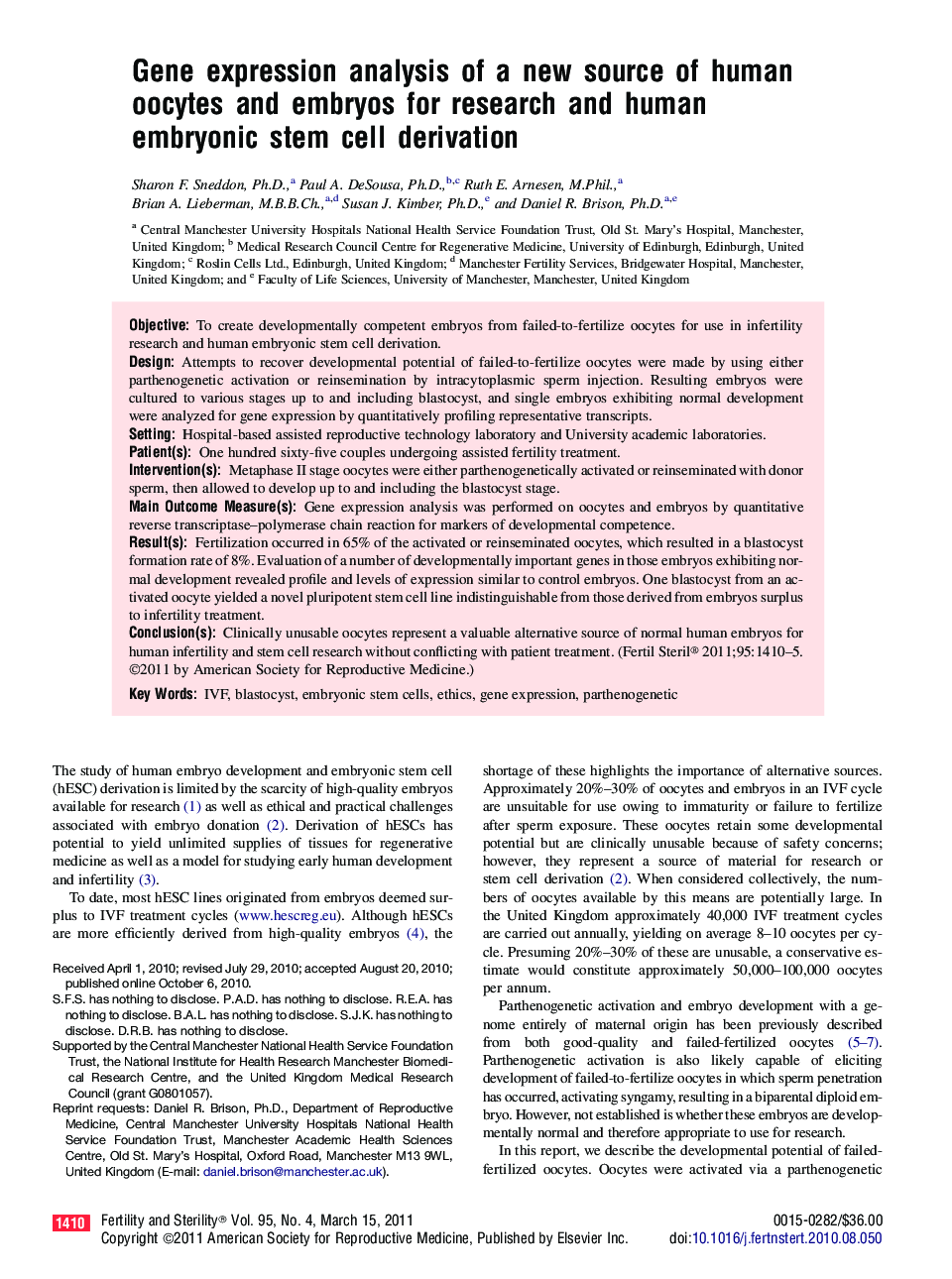| Article ID | Journal | Published Year | Pages | File Type |
|---|---|---|---|---|
| 6179892 | Fertility and Sterility | 2011 | 6 Pages |
ObjectiveTo create developmentally competent embryos from failed-to-fertilize oocytes for use in infertility research and human embryonic stem cell derivation.DesignAttempts to recover developmental potential of failed-to-fertilize oocytes were made by using either parthenogenetic activation or reinsemination by intracytoplasmic sperm injection. Resulting embryos were cultured to various stages up to and including blastocyst, and single embryos exhibiting normal development were analyzed for gene expression by quantitatively profiling representative transcripts.SettingHospital-based assisted reproductive technology laboratory and University academic laboratories.Patient(s)One hundred sixty-five couples undergoing assisted fertility treatment.Intervention(s)Metaphase II stage oocytes were either parthenogenetically activated or reinseminated with donor sperm, then allowed to develop up to and including the blastocyst stage.Main Outcome Measure(s)Gene expression analysis was performed on oocytes and embryos by quantitative reverse transcriptase-polymerase chain reaction for markers of developmental competence.Result(s)Fertilization occurred in 65% of the activated or reinseminated oocytes, which resulted in a blastocyst formation rate of 8%. Evaluation of a number of developmentally important genes in those embryos exhibiting normal development revealed profile and levels of expression similar to control embryos. One blastocyst from an activated oocyte yielded a novel pluripotent stem cell line indistinguishable from those derived from embryos surplus to infertility treatment.Conclusion(s)Clinically unusable oocytes represent a valuable alternative source of normal human embryos for human infertility and stem cell research without conflicting with patient treatment.
